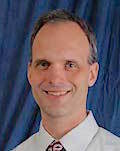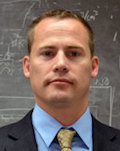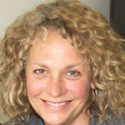UW leading $2.6 million effort to improve solar power plants
The U.S. Department of Energy has awarded $2.6 million to a research collaboration led by University of Wisconsin–Madison engineering physics research Professor Mark Anderson that aims to advance the technology of utility-scale concentrating solar power (CSP) plants.
The team combines the expertise of two universities, two national laboratories and two private companies. Anderson and UW–Madison Kaiser Professor of Mechanical Engineering Greg Nellis will collaborate with Robert Braun at the Colorado School of Mines, Matthew Carlson at Sandia National Laboratories, Ty Neises at the National Renewable Energy Laboratory, Zhijun Jia at the Wisconsin-based company CompRex, and Richard Gradle at the Texas-based corporation Flowserve. The proposal is being run by the Wisconsin Energy Institute.

Nellis

Anderson
CSP plants use large solar collectors to focus and transfer the sun’s heat to a fluid whose thermal energy can be converted to electricity. Reducing the cost of CSP-generated electricity requires improving the efficiency of this conversion.
To that end, Anderson’s team will design two CSP units based upon an advanced power cycle called “supercritical carbon dioxide.” The researchers will test these units at UW–Madison and Sandia’s prototype facility in Albuquerque, New Mexico.
While the proposal focuses on solar energy, the same advanced power cycle can also be used for electricity generation with nuclear, geothermal and fossil energy sources.
Following a detailed economic study of the advanced cycle’s advantages over conventional power cycles, the group will design a novel regenerator — the unit that converts thermal to mechanical energy. Compared to the recuperator currently used for this conversion, the new regenerator is expected to be easier to fabricate and have better capabilities for internal heat transfer and energy storage. This will help lower operation and maintenance costs.
The group will also develop a “pre-cooler unit” that will release heat into the atmosphere at lower temperatures than current power cycles, minimizing waste energy. Because of its dry cooling capability, this unit will help reduce the large water needs of currently operating CSP plants.
“We are excited to begin this innovative research project,” Anderson says. “Ultimately, our work will help achieve DOE’s goal of making solar energy cost-competitive with fossil fuels by 2020.”
—Silke Schmidt



